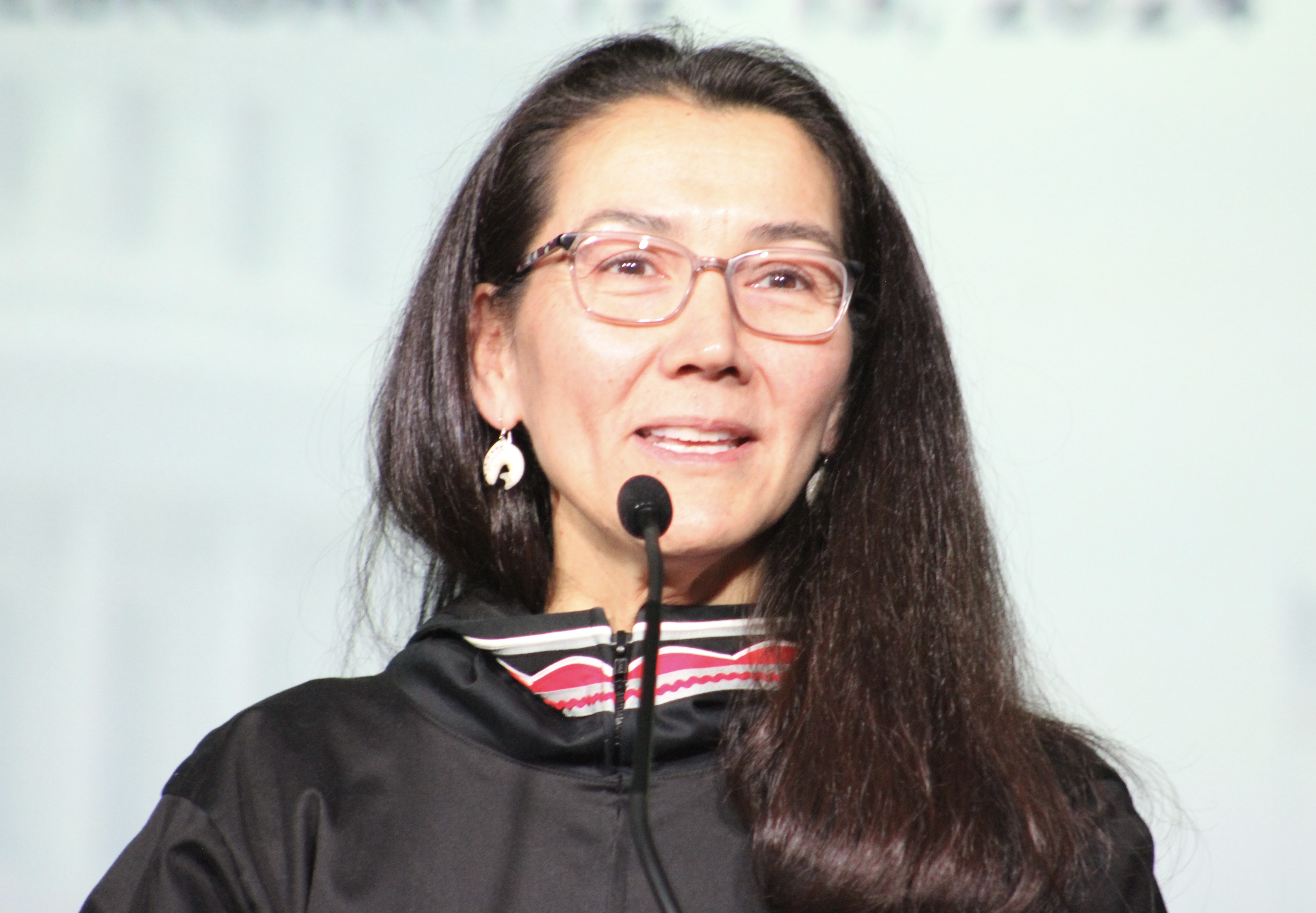
- Details
- By Levi Rickert
In February, the U.S. Department of Transportation rejected Alaska’s four-year statewide transportation improvement program, or STIP. Alaska was the only state in the union that had its STIP rejected.
After Alaska’s STIP was rejected last month, state officials, including Rep. Mary Sattler Peltola (D-AK), went to work to ensure that the Transportation Department funding dollars were not lost. She began a series of conversations with U.S. Department of Transportation (DOT) Secretary Pete Buttigieg and the Alaska Department of Transportation and Public Facilities (DOT&PF) to accomplish the task.
On Wednesday, it was announced that the U.S. Federal Highway Administration (FWHA) had partially approved its four-year spending plan, putting the agency on track to deliver $5 billion in transportation investments for Alaska roads, ferries, bridges, bike lanes, and safety improvement projects.

Wednesday’s partial approval came after the agency rejected the state’s first submission, citing 24 pages of flaws with the $5.6 billion plan.
Peltola said that given Alaska’s roads face harsh elements and require constant construction and maintenance, it is critical that the STIP gets fast approval.
“Today, I was happy to get a text from Pete sharing that the Federal Highway Administration had partially approved Alaska’s STIP to keep some of Alaska’s biggest projects on track. I’ll keep working to get as many highway dollars to Alaska as I can,” Peltola said.
After Wednesday’s announcement of the partial funding for Alaska’s STIP, Transportation Assistant Secretary for Indian Affairs Arlando Teller (Navajo) spoke to Native News Online on the importance of the funding.
“This investment is essential for tackling the exceptional transportation difficulties encountered by Alaska and Native Alaskan Villages on a regular basis,” Teller said.
According to the Transportation Department’s guidelines, had the plan been fully rejected a second time, it would have had a lasting impact on Alaska’s summer construction window with ripple effects across the state.
More Stories Like This
Native News Weekly (August 25, 2024): D.C. BriefsUS Presidents in Their Own Words Concerning American Indians
Indigenous Actor Elaine Miles Reports Detention by Alleged ICE Agents
Happy Thanksgiving from Native News Online
Coming Up on Native Bidaské: Behind the Animation: Joey Clift Talks “Pow” and Native Storytelling
Help us tell the stories that could save Native languages and food traditions
At a critical moment for Indian Country, Native News Online is embarking on our most ambitious reporting project yet: "Cultivating Culture," a three-year investigation into two forces shaping Native community survival—food sovereignty and language revitalization.
The devastating impact of COVID-19 accelerated the loss of Native elders and with them, irreplaceable cultural knowledge. Yet across tribal communities, innovative leaders are fighting back, reclaiming traditional food systems and breathing new life into Native languages. These aren't just cultural preservation efforts—they're powerful pathways to community health, healing, and resilience.
Our dedicated reporting team will spend three years documenting these stories through on-the-ground reporting in 18 tribal communities, producing over 200 in-depth stories, 18 podcast episodes, and multimedia content that amplifies Indigenous voices. We'll show policymakers, funders, and allies how cultural restoration directly impacts physical and mental wellness while celebrating successful models of sovereignty and self-determination.
This isn't corporate media parachuting into Indian Country for a quick story. This is sustained, relationship-based journalism by Native reporters who understand these communities. It's "Warrior Journalism"—fearless reporting that serves the 5.5 million readers who depend on us for news that mainstream media often ignores.
We need your help right now. While we've secured partial funding, we're still $450,000 short of our three-year budget. Our immediate goal is $25,000 this month to keep this critical work moving forward—funding reporter salaries, travel to remote communities, photography, and the deep reporting these stories deserve.
Every dollar directly supports Indigenous journalists telling Indigenous stories. Whether it's $5 or $50, your contribution ensures these vital narratives of resilience, innovation, and hope don't disappear into silence.
 The stakes couldn't be higher. Native languages are being lost at an alarming rate. Food insecurity plagues many tribal communities. But solutions are emerging, and these stories need to be told.
The stakes couldn't be higher. Native languages are being lost at an alarming rate. Food insecurity plagues many tribal communities. But solutions are emerging, and these stories need to be told.
Support independent Native journalism. Fund the stories that matter.
Levi Rickert (Potawatomi), Editor & Publisher

